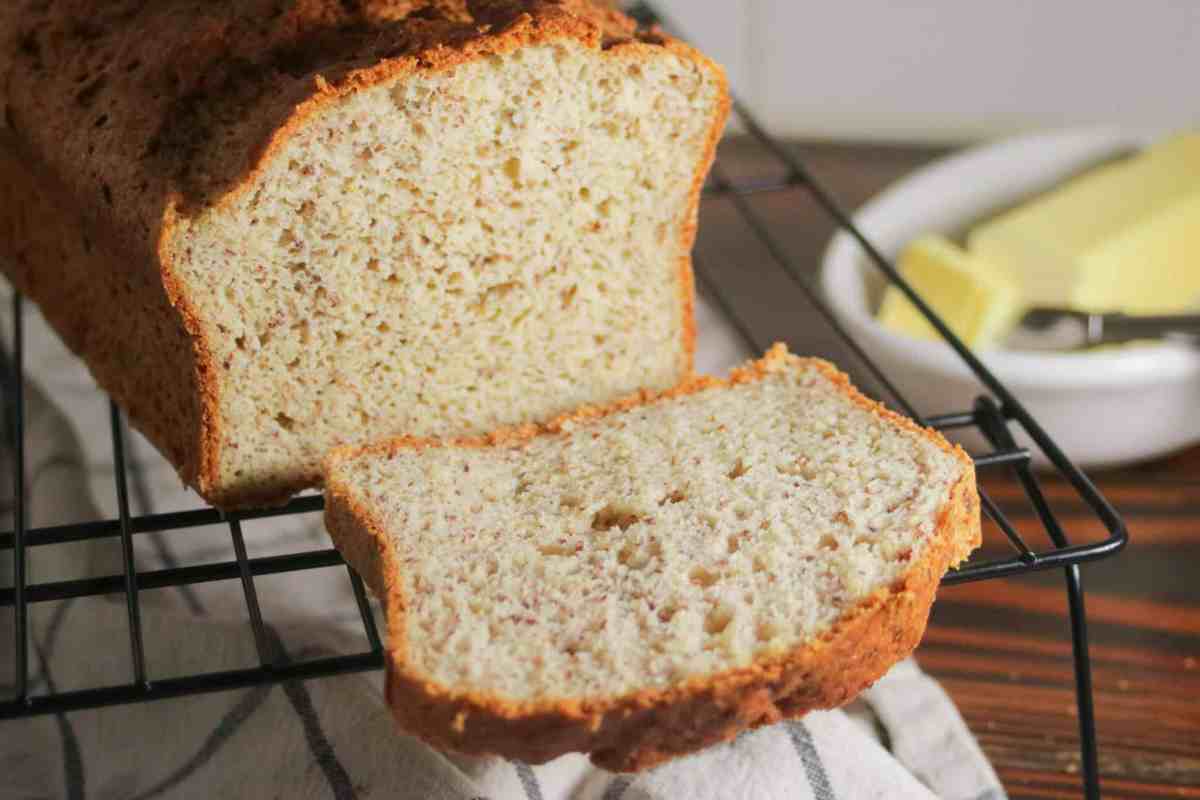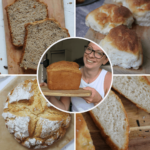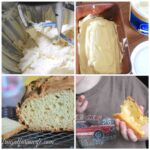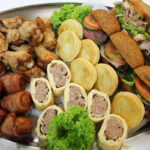Imagine effortlessly crafting delicious, fluffy gluten-free bread, bursting with flavor, using only a handful of simple ingredients. This isn’t a dream; it’s the reality of baking with our easy, minimal-ingredient recipes. Forget complicated processes and long ingredient lists – we’ll guide you through creating light and airy loaves that rival traditional bread, all while catering to gluten-free lifestyles. Discover the joy of simple, wholesome baking, perfect for both novice and experienced bakers alike.
The benefits extend beyond just dietary needs. Gluten-free baking allows for experimentation with different flour blends, creating unique textures and flavors. Learning to select the right blend is key to success, and we’ll explore the nuances of various options, empowering you to tailor your bread to your preferences. From savory herb additions to sweet fruit infusions, the possibilities are endless.
Basic Gluten-Free Bread Recipe (One-Bowl Method)
This recipe provides a simple, straightforward method for making delicious gluten-free bread using just one bowl, minimizing cleanup and maximizing ease. The result is a moist, slightly crumbly loaf perfect for sandwiches, toast, or simply enjoying on its own. This one-bowl approach streamlines the process, making gluten-free baking accessible to even the most novice bakers.
Recipe Details
This section details the steps for creating a simple, delicious gluten-free bread using a one-bowl method. Precise measurements and clear instructions ensure a successful baking experience. Proper mixing is crucial for achieving the optimal texture in gluten-free bread.
| Ingredients | s | Notes | Image Descriptions |
|---|---|---|---|
| 1 ½ cups gluten-free all-purpose flour blend | Whisk together with the xanthan gum. | Use a blend specifically designed for bread baking. | A close-up image showing the fine, light-brown powder of the gluten-free flour blend in a mixing bowl, highlighting its texture and color. |
| 1 teaspoon xanthan gum | This acts as a binding agent. | Do not substitute; xanthan gum is essential for gluten-free bread structure. | A small container of xanthan gum powder is shown, emphasizing its fine, almost powdery consistency. |
| 1 teaspoon salt | Enhances the flavor. | Sea salt or kosher salt are good choices. | A small pile of fine white salt crystals is shown against a dark background, showcasing its texture and grain size. |
| 1 tablespoon sugar | Provides food for the yeast and contributes to browning. | Granulated white sugar is preferred. | A spoonful of granulated sugar, showing its crystalline structure and slight sparkle under light. |
| 2 teaspoons active dry yeast | The leavening agent. | Ensure your yeast is fresh; check the expiration date. | A small packet of active dry yeast is displayed, showing the fine, granular texture of the yeast. |
| 1 ¼ cups warm water (105-115°F) | Dissolve the yeast in this. | Too hot water will kill the yeast; too cold will prevent activation. | A glass measuring cup filled with warm water, showing the gentle swirling movement indicating its temperature. |
| 2 tablespoons olive oil | Adds moisture and flavor. | Any neutral-flavored oil will work. | A small bowl with olive oil, highlighting its viscous texture and clear, golden color. |
Mixing and Kneading Gluten-Free Dough
Proper mixing techniques are crucial for gluten-free bread. Unlike traditional wheat dough, gluten-free dough doesn’t develop gluten strands for elasticity. Instead, the goal is to evenly distribute the ingredients and create a cohesive dough without overmixing.
The one-bowl method simplifies this. First, whisk together the dry ingredients. Then, add the warm water and oil, mixing gently with a wooden spoon or spatula until just combined. Avoid vigorous stirring, as this can incorporate too much air and lead to a tough loaf. A slightly lumpy batter is perfectly acceptable. Let the dough rest for at least 10 minutes to allow the yeast to activate and the flour to absorb the liquid. After resting, gently fold the dough a few times to ensure even distribution. Over-mixing is the enemy; the dough should be slightly sticky but manageable.
Variations and Flavor Enhancements

Unlocking a world of culinary possibilities, this section explores how to transform your basic gluten-free bread into a delightful array of flavors and textures. By experimenting with different flour blends and incorporating various add-ins, you can craft loaves that cater to any palate. The key is understanding how each ingredient contributes to the final product’s taste and structure.
Gluten-Free Flour Blend Selection and its Impact
Different gluten-free flour blends offer unique characteristics that significantly influence the final bread’s texture, crumb, and even its browning. A blend’s composition directly affects the outcome. For instance, a blend heavier in rice flour might produce a slightly denser loaf, while one featuring more tapioca starch could result in a lighter, airier crumb. Experimentation is key to finding your preferred blend.
The Role of Different Gluten-Free Flour Blends
A blend predominantly composed of brown rice flour often yields a nuttier flavor and a slightly chewier texture. Conversely, a blend with a higher proportion of tapioca starch contributes to a softer, more tender crumb, potentially leading to a slightly less dense loaf. Adding potato starch or sweet rice flour can further enhance the softness and moisture retention of the bread. Many commercially available blends offer a pre-mixed combination of these flours, providing a good starting point for experimentation. The subtle differences in each flour’s contribution create diverse bread textures. For example, a blend with significant sorghum flour might lead to a slightly grainy texture, while a blend rich in almond flour could yield a more delicate crumb with a subtle nutty aroma.
Flavor Enhancement with Herbs, Spices, and Seeds
Incorporating herbs, spices, and seeds adds depth and complexity to your gluten-free bread. The aromatic oils and compounds within these ingredients contribute to a more nuanced flavor profile.
Examples of Flavor Enhancers and Their Profiles
- Rosemary and Sea Salt: The pungent, slightly piney aroma of rosemary pairs beautifully with the salty crunch of sea salt, creating a savory and aromatic loaf, ideal for accompanying soups or stews. Imagine the vibrant green flecks of rosemary scattered throughout the golden-brown crust.
- Cinnamon and Raisins: The warm, sweet notes of cinnamon complement the chewy sweetness of raisins, resulting in a comforting and subtly spiced bread, perfect for breakfast or dessert. The rich brown color and the sweet aroma are inviting.
- Sun-dried Tomatoes and Basil: The intense, umami flavor of sun-dried tomatoes, combined with the fresh, herbaceous notes of basil, creates a Mediterranean-inspired loaf, excellent with cheeses and olives. The deep red color of the tomatoes adds a visually appealing contrast.
- Poppy Seeds and Sesame Seeds: These small seeds add a pleasant crunch and a slightly nutty flavor to the bread, enhancing its texture and providing a visual appeal with their contrasting colors. The tiny seeds dot the surface, creating a pleasing visual texture.
Incorporating Add-ins: Cheese, Nuts, and Dried Fruit
Adding ingredients like cheese, nuts, and dried fruit elevates your gluten-free bread to new heights, offering both textural and flavor variations. The method of incorporation is crucial to ensure even distribution and prevent the add-ins from sinking to the bottom.
Examples of Add-ins and Their Incorporation
- Cheese: Grated cheddar or parmesan cheese can be easily incorporated into the dough before baking. The cheese melts and distributes evenly, creating a savory, cheesy bread.
- Nuts: Chopped walnuts, pecans, or almonds can be folded into the dough for added crunch and flavor. To prevent them from settling, gently toss them with a little flour before adding them to the batter.
- Dried Fruit: Chopped cranberries, raisins, or chopped apricots add sweetness and moisture. Soaking them in warm water for 10-15 minutes before adding them to the dough helps to plump them up and prevents them from drying out the bread.
Tips and Troubleshooting for Gluten-Free Baking
Gluten-free baking presents unique challenges compared to traditional baking, primarily due to the absence of gluten, the protein that provides structure and elasticity in wheat-based doughs. Mastering gluten-free bread requires understanding the nuances of alternative flours and employing specific techniques to achieve a light and airy loaf. This section offers practical tips and solutions to common problems, ensuring your gluten-free bread is a success.
Achieving a Light and Airy Gluten-Free Bread
Creating a light and airy gluten-free loaf requires careful attention to several factors. The use of xanthan gum or guar gum is crucial, as these bind the ingredients together, mimicking the role of gluten. Additionally, proper mixing is essential to prevent a dense texture. Overmixing can lead to a tough bread, while undermixing can result in a crumbly one. The ideal consistency should be smooth but not overly worked. Finally, the use of leavening agents like yeast or baking powder is key to achieving that airy texture. A well-risen loaf is an indicator of successful leavening. Imagine a perfectly golden-brown crust, giving way to a soft, fluffy interior – that’s the goal.
Common Problems and Solutions in Gluten-Free Baking
Several common issues can hinder the success of gluten-free baking. One frequent problem is a dense, gummy texture. This often stems from using too much liquid or not enough leavening. Adjusting the liquid ratio and ensuring sufficient leavening are crucial steps towards a lighter loaf. Another common issue is a crumbly, dry bread. This usually points towards insufficient binding agents, such as xanthan gum or insufficient moisture. Adding more binding agent or a little extra liquid can solve this problem. A collapsed loaf, on the other hand, might indicate over-mixing or under-proofing (if using yeast). Gentle mixing and allowing sufficient rising time are vital here. Picture a perfectly formed loaf, with a consistent crumb structure throughout; this is the result of successfully avoiding these common pitfalls.
Importance of Baking Temperature and Time
Precise baking temperature and time are critical for gluten-free bread. The optimal temperature is usually between 350°F (175°C) and 375°F (190°C), depending on the recipe and oven. Using an oven thermometer is recommended to ensure accuracy. Baking for too short a time results in an underbaked, gummy interior, while overbaking leads to a dry, hard crust. A visual cue is the golden-brown crust, which usually signifies that the bread is baked through. It’s also wise to use a toothpick inserted into the center to check for doneness. A clean toothpick indicates that the bread is thoroughly baked. Imagine the aroma of freshly baked bread filling your kitchen – a testament to the perfectly timed and temperature-controlled baking process.
Mastering gluten-free bread baking doesn’t require culinary expertise or a pantry overflowing with specialized ingredients. With our easy recipes and troubleshooting tips, you’ll confidently create delicious, wholesome loaves that your family and friends will adore. Embrace the simplicity, experiment with flavors, and savor the satisfaction of homemade gluten-free bread, fresh from your oven. The journey from flour to fluffy perfection is simpler than you think; let’s begin!
Common Queries
Can I use different types of gluten-free flour blends interchangeably?
While many blends work, results may vary. Some blends are better for certain textures. Experimenting is key to finding your favorite.
How long does the bread stay fresh?
Properly stored, gluten-free bread generally lasts 3-4 days at room temperature in an airtight container. Freezing extends its shelf life considerably.
What if my bread is too dense?
This often indicates insufficient leavening or overmixing. Ensure you’re using a fresh leavening agent and avoid over-kneading the dough.
Can I make this recipe in a bread machine?
Yes, many bread machine recipes adapt well to gluten-free ingredients. Consult your machine’s manual for gluten-free settings and adjustments.


